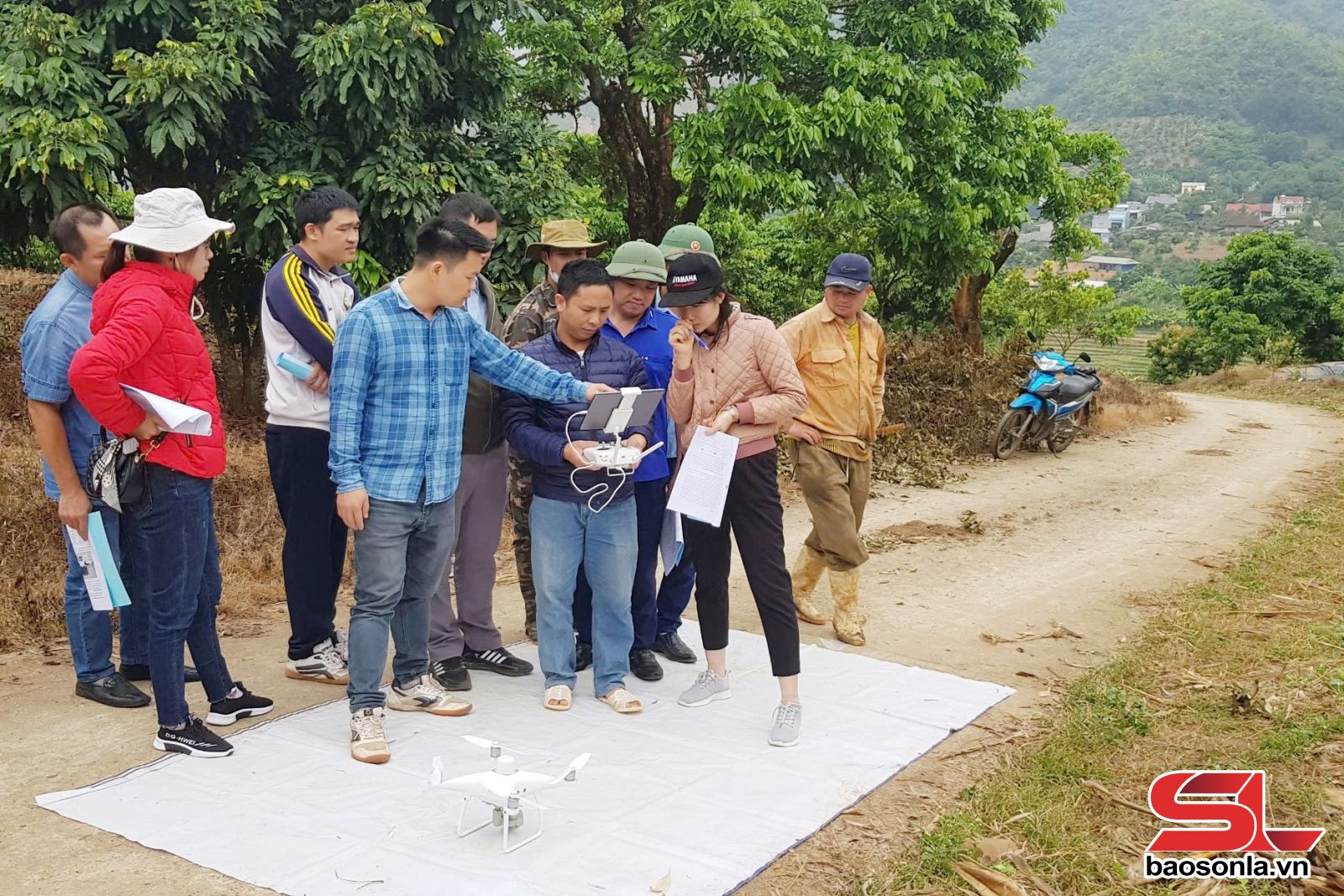.jpg)
For the past two years, the Phuong Nam Cooperative in Long Phieng commune, Yen Chau district, has been using drones to spray pesticides on its longan orchards. The method has been assessed as offering numerous advantages over traditional ones.
Tran Nhu Kien, Director of the cooperative, said “With traditional pesticide spraying methods, we had to carry bulky tanks weighing up to 30-40 kg on our backs. Climbing hills was exhausting, requiring continuous pumping and moving the spray nozzle. In a day, we could only spray about 2 hectares of longan”.
With drones, however, just one operator and one person mixing the pesticides can spray 1 hectare in only 10 minutes. Each drone can cover up to 30 hectares per day, equivalent to the work of around 20 farmers. From a stationary position, the operator can control the drone, which flies autonomously to the designated points and sprays evenly across the crops, he said.
In addition to facilitating crop care, drones are also used to monitor the growth and development of plants. By collecting and analysing accurate data over large areas and concentrated production zones—particularly in regions with complex terrain—drones provide valuable insights into agricultural processes.

In 2022, Son La province approved the implementation of the provincial-level scientific research project titled “Application of drones integrated with Technology 4.0 for monitoring the growth and health of certain agricultural crops (mango and longan) in the province,” led by the Centre for Mountainous Environment and Resources at the Thai Nguyen University of Agriculture and Forestry. After two years of implementation, the project has been highly evaluated in several key fruit-growing areas of the province.
The research team has assessed the current situation and traditional technical measures on 10.5 hectares of mango trees of the Chieng Hac Safe Agriculture Cooperative in Yen Chau district and a 9.1-hectare longan orchard of the Hoa Muoi Agricultural Service Cooperative in Song Ma district, in order to apply drones for monitoring crop growth and health.
The data collection equipment used throughout the project includes multispectral image sensors and integrated GPS technology for precise positioning and flight direction. The image data is collected on a regular basis, approximately once a month, during different growth and development stages of the mango and longan trees.
Based on the data analysed by drones, the research team has developed digital maps showing elevation, slope of orchards, location, density, and calculated the height and canopy structure, as well as the vegetation index sensitive to plant health conditions. These maps also classify areas affected by biotic factors (pests and diseases) and abiotic factors (nutrients and water). Additionally, a map has been created to highlight areas with pests and areas where crops are lacking nutrients, providing farmers with statistics for better management and care.

Dr. Nguyen Huy Trung, the project leader, said after two years of implementation, crop locations were identified automatically from drone image data with 95% accuracy. The project also developed a method for assessing crop health, allowing monitoring of nutritional status, detecting water deficiencies, and identifying pest infestations with an average accuracy of 80%. Notably, the system can detect common pests, such as planthoppers and mealybugs, early in the flowering and fruit-setting stages.
The Hoa Muoi Agricultural Service Cooperative in Song Ma district was selected as a pilot model for using drones in longan care. Its members were trained to use modern technology to monitor plant growth, focusing on precise irrigation and pest control in specific areas.
According to its Director Luong Van Muoi, the application of drone technology over their 35 hectares of T6 and Mien Thiet longan varieties has significantly reduced production costs. Over the past two years, the cooperative has improved fertilizer and pesticide efficiency, cutting usage by 15-22%, and cut the workforce required for regular field surveys by about 40%. In addition, the drones have enhanced water management and enabled early detection and control of pests, minimising crop damage and limiting pest spread. As a result, longan yields have increased by approximately 10% annually.
Son La is among Vietnam’s major fruit-growing regions. The adoption of advanced technologies, particularly drones, supports farmers, producers, and managers in monitoring crop growth, ensuring optimal care, and protecting plants. This approach is especially beneficial for large-scale concentrated production areas with complex terrain. It reduces production costs, improves economic efficiency, enhances resilience to climate change, and contributes to building a smart, sustainable, and adaptive agriculture in the future.

























You have 500/500 characters left
Please enter 5 or more characters!!!